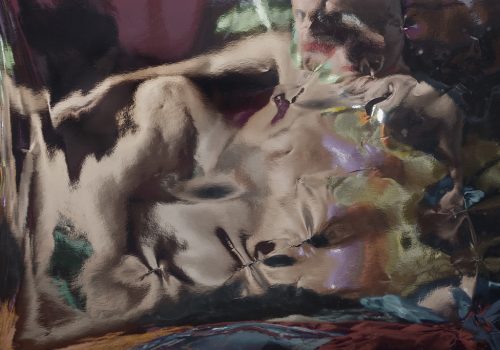Muriel Berthou Crestey’s book, “At the heart of photographic creation” offers a meeting with 24 of the greatest contemporary photographers.
Photographers speak. What are the regrets or surprises that punctuate a photographer’s life? What are the corresponding realization, sharing and selling strategies? What are the starting points, the theme, the forms, etc. ? What are the moods of photographers? How have new technologies changed their practices? To answer these questions and many others, Muriel Berthou Crestey met photographers representative of various movements of the contemporary era.
The Eye of Photography presents to you in the coming days extracts from these interviews, today Jean-Christian Bourcart.
The stalker of images (published interview includes 25 questions – here are 5)
M.B. C. Catching moments, would that be a way of holding them back?
J.-C. B. These are things that go through desire, desires and instinct. The intellectual work intervenes in a second plan. Duchamp said: “The artist is better when he does not know what he is doing. There must be a let go. There are also some unsuccessful attempts. After, we begin to dig the furrow but at the beginning, it’s really chance. There is always a lot of meetings. You have to catch things that are more or less cyclical, extraordinary. I like chance, that’s for sure. I try to create situations where one has the best chance of capturing extraordinary moments.
B. C. The Traffic series (1999-2003) is a real portrait gallery, with faces often plunged into an abyss of perplexity. What attention do you give to the notion of non-places in relation to this series?
J.-C. B. There is a succession of places, the street, Canal street, the car,a place of itinerant intimacy; reflections, place of the imperfect mirror; the place of the meeting between the viewer and the photo that is located geographically in a gallery, or in a book … But let’s say that if the photo does not describe the place, the legend does: Downtown Manhattan …, so we recreate a place with our memories or our imagination.
B. C. The video Bardo works on the principle of a succession of images that follow one another very quickly, giving the impression of subliminal images. What place does the unconscious play in your works?
J.-C. B. The unconscious is everywhere. Put in place devices that will allow you to do things with chance and the invisible. The premedity is the device, the rigged jacket, the black leaf, the destination Camden … all that is the frame. After that, what happens in this setting, we do not know. The device allows to capture something of the unpredictable. But I do not think it’s specific to me. It’s a bit of art history.
B. C. Are you aware of what you are doing when you start the device?
J.-C. B. There are networks of signifiers of which I am particularly conscious and I play. Psychoanalysis is one of them, but there are others. The relationship with mysticism, initiation ceremonies in primitive tribes. I do things with Peruvian shamans where we go through internal states. I am also very influenced by Buddhism which provokes a very general relation to the world and the real, in relation to the illusion in particular. I am very interested in the levels of perception and the conceptualizing effects of the human mind that comes to the notion of the real. But Buddhist thought, and mysticism more generally, dismantles these representations. Buddhists show that we must push doors to go beyond. There is a lot more space than we want to imagine. The question is how, as a human, we want to touch the inhuman.
B. C. Why photograph by stealth?
J.-C. B. There were these forbidden places that fascinated me and it was the only way to capture them without influencing the scene, except by the modalities of capturing the real that determine the result (matter of framework …).
Muriel Berthou Crestey – Au coeur de la création photographique
ISBN 978-2-8258-0285-4
Editions Ides et Calendes
















